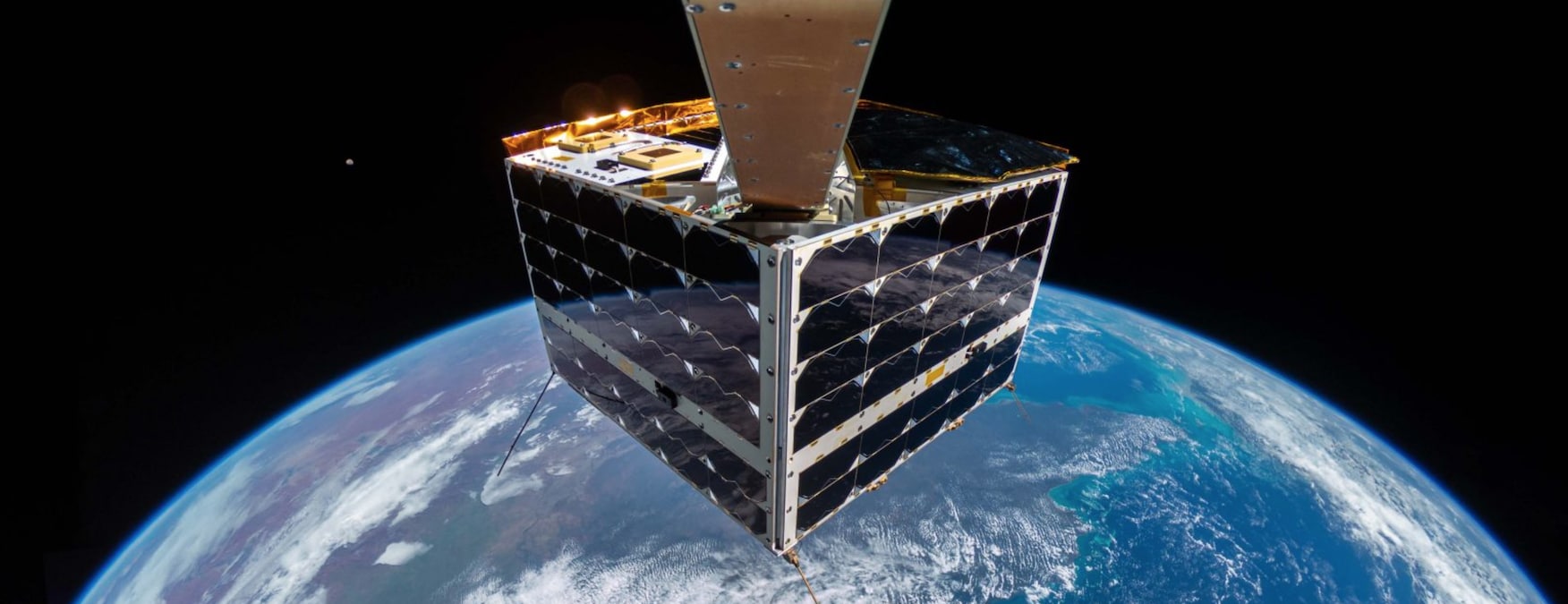Satellite Selfie Showcases Vulnerability of Great Barrier Reef

 Why you can trust us
Why you can trust us
Founded in 2005 as an Ohio-based environmental newspaper, EcoWatch is a digital platform dedicated to publishing quality, science-based content on environmental issues, causes, and solutions.
In 1968, a photograph taken from space helped galvanize the environmental movement. The famous “Earthrise” image of our planet rising from the moon helped raise awareness about the importance of protecting humanity’s only home.
“The vast loneliness is awe-inspiring and it makes you realize just what you have back there on Earth,” Command Module pilot Jim Lovell, one of three astronauts on the Apollo 8 mission responsible for the photo, said of the view, according to NASA.
Now, a satellite company is looking to inspire a similar reaction with an innovative selfie. The company, NanoAvionics, recorded the first-ever 4K satellite selfie from space with the Great Barrier Reef in the background.
“The reason for taking the photo and video clip with the Great Barrier Reef in the background was partly symbolic,” NanoAvionics co-founder and CEO Vytenis J. Buzas said in the press release. “We wanted to highlight the vulnerability of our planet and the importance of Earth observation by satellites, especially for monitoring environment and climate changes.”
The Great Barrier Reef is the only living structure visible from space. It is also extremely vulnerable to the climate crisis. The reef has experienced six mass bleachings — which occur due to high ocean temperatures — since 1998 and four since 2016. The most recent, in the Australian summer of 2021-2022, impacted more than 90 percent of the corals.
“Climate change is the greatest threat to the Great Barrier Reef and coral reefs worldwide,” the Great Barrier Reef Marine Park Authority has declared.
Satellite imagery is an important tool for understanding and, therefore, protecting coral reefs. In 2021, for example, almost two million satellite imagery enabled the Allen Coral Atlas, the first-ever high resolution map of the world’s coral reefs.
The NanoAvionics satellite selfie was taken with relatively simple technology that anyone can buy: a GoPro Hero 7. The company then attached the camera to a custom-built selfie stick for the shot, according to Gizmodo. The results were 12-megapixel photos and 4K video clips, according to the press release.
“In our increasingly visual culture, it is important for investors, students, customers and the general public to see in order to believe. Millions watch rocket launches but barely see satellites moving in orbit or deployable structures in operation. This is going to change through live or recorded footage,” Buzas said in the release.
Seeing was believing in the case of Earthrise as well.
“It… became a blinding confirmation that our Earth, floating in a sea of stars, was vulnerable and needed protecting,” Earth Day Network President Kathleen Rogers wrote in USA Today. “The Earth looked so perfect, so radiant, so small.”
Subscribe to get exclusive updates in our daily newsletter!
By signing up, you agree to the Terms of Use and Privacy Policy & to receive electronic communications from EcoWatch Media Group, which may include marketing promotions, advertisements and sponsored content.

 233k
233k  41k
41k  Subscribe
Subscribe 




